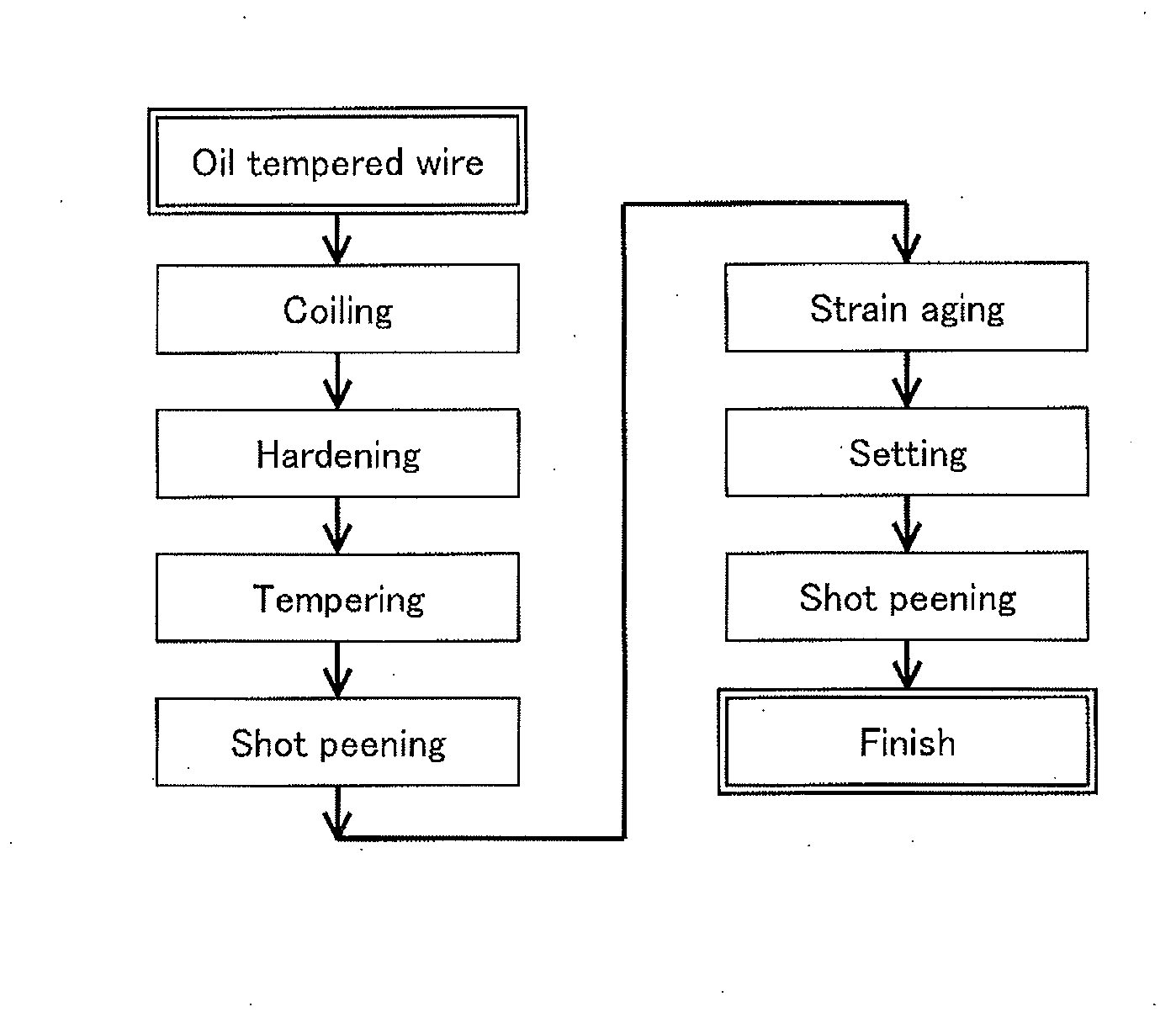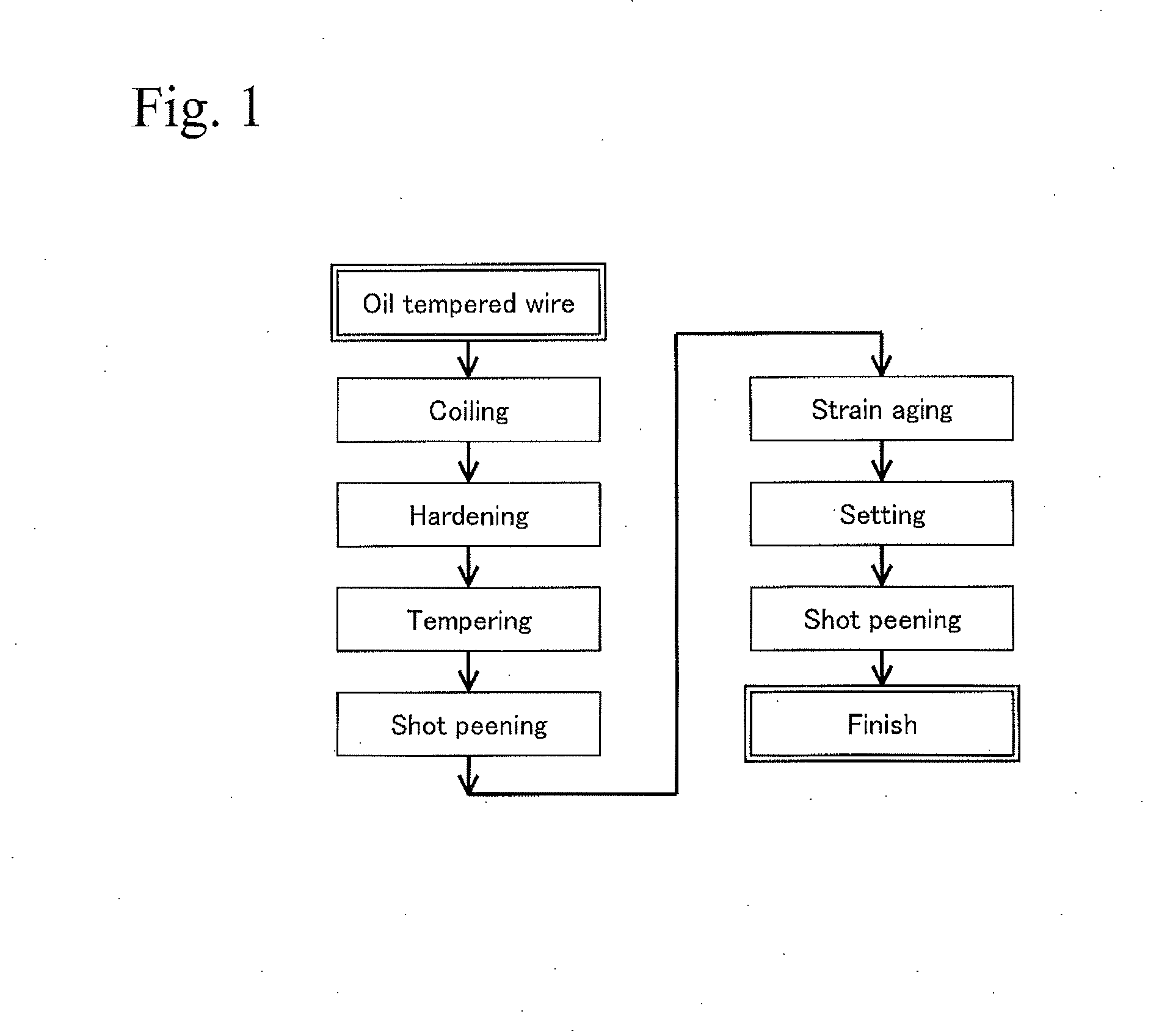Spring and manufacture method thereof
a technology of fatigue resistance and spring, which is applied in the field of springs with superior fatigue resistance, can solve the problems of difficult to remove tensile residual stress, limit the increase of anneal softening resistance, etc., and achieve the effects of reducing fatigue resistance, reducing compressive residual stress obtained by shot peening, and large permanent s
- Summary
- Abstract
- Description
- Claims
- Application Information
AI Technical Summary
Benefits of technology
Problems solved by technology
Method used
Image
Examples
examples
[0049]Springs were produced according to the steps shown in FIG. 1. That is, an oil tempered wire (SWOSC-V) having a composition shown in Table 1 was prepared and was cold coiled into a predetermined shape by a coiling machine, whereby springs shown in Table 2 were obtained. The springs were subjected to a heat treatment at a condition shown in Table 3. Next, the springs were subjected to shot peening. In the shot peening, round cut wires with a sphere-equivalent diameter of 0.8 mm were used in a first step. Then, round cut wires with a sphere-equivalent diameter of 0.45 mm were used in a second step. Moreover, the springs were heated to 230° C. for 10 minutes for strain aging and were cooled down to room temperature. Then, the springs were subjected to cold setting corresponding to maximum shear strain of 0.020 (maximum shear stress of τ=1565 MPa, and modules of rigidity of 78.5 GPa). Various characteristics of the springs were investigated in the following manner with respect to t...
PUM
| Property | Measurement | Unit |
|---|---|---|
| Temperature | aaaaa | aaaaa |
| Temperature | aaaaa | aaaaa |
| Length | aaaaa | aaaaa |
Abstract
Description
Claims
Application Information
 Login to View More
Login to View More - R&D
- Intellectual Property
- Life Sciences
- Materials
- Tech Scout
- Unparalleled Data Quality
- Higher Quality Content
- 60% Fewer Hallucinations
Browse by: Latest US Patents, China's latest patents, Technical Efficacy Thesaurus, Application Domain, Technology Topic, Popular Technical Reports.
© 2025 PatSnap. All rights reserved.Legal|Privacy policy|Modern Slavery Act Transparency Statement|Sitemap|About US| Contact US: help@patsnap.com


